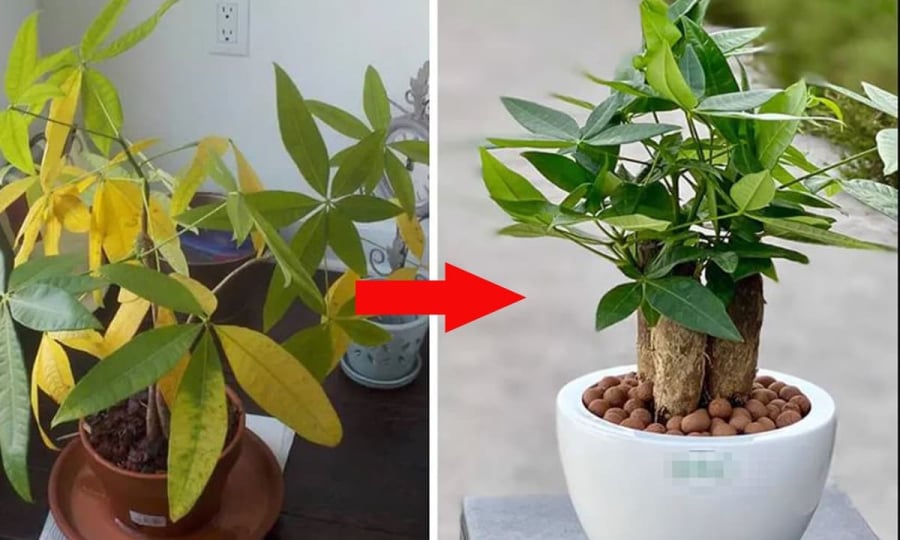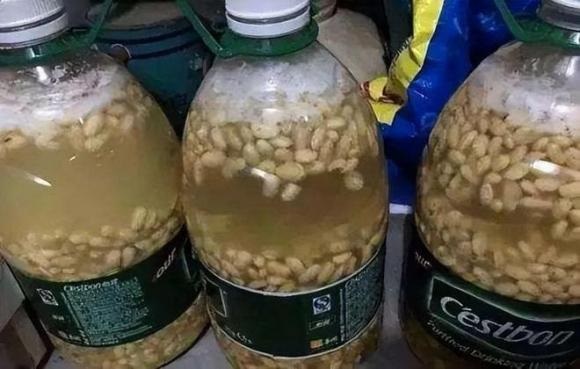The possible reasons why a golden leaf tree can turn yellow are due to nutrient deficiency, lack of energy, weather conditions, pests, or excessive watering. Hence, you need to check if the tree is lacking sunlight. If it lacks energy, you should expose it to sunlight, but avoid sudden exposure to strong sunlight as it may cause immediate death to the weakened tree. If the tree has pests, you should remove them and use insecticide spray (if indoors, use biological insecticide spray)…

Some basic reasons for leaf yellowing in plants
Yellowing of leaves due to excessive watering: Check if you are overwatering, causing the soil to remain constantly moist. If it’s due to excessive watering, stop watering and place the plant in a well-ventilated area to dry faster.
Yellowing of leaves due to pests and diseases: It will show black spots or signs of pests and diseases on the stem and leaves. In this case, you need to control and eliminate the pests.
Yellowing of leaves due to lack of sunlight: Check if the plant is kept in a place with insufficient sunlight. Plants lacking sunlight will become weak, pale, and develop yellow leaves.
Yellowing of leaves due to nutrient deficiency: If you haven’t fertilized the plant for a long time, the leaves will turn yellow, become thinner, and gradually wither. If the plant has grown larger than the amount of soil and pot it has, it may not have enough nutrients. In this case, you need to provide additional nutrients.
These water options are great for revitalizing plants
Beer or soda
If your plants have been planted for a long time without changing the soil and lack nutrients, causing yellow leaves, you can water them with a little diluted beer or soda. These drinks are rich in nutrients and “boost” the plants, making them greener and fresher. You should water a bit away from the roots, avoiding watering the leaves.
Use diluted Aspirin as a watering solution
Aspirin is a fever-reducing and pain relieving medicine commonly available at pharmacies. Its active ingredient, salicylic acid, regulates soil acidity and alkalinity, preventing root rot in plants. Even if aspirin is expired for human use, you can still use it to water your plants.
You can crush an aspirin tablet and dilute it with water, then water it at the base of the plant. This water helps improve the soil’s acidity, preventing the yellowing of plants, especially in winter. You should dilute 1 tablet with about 1 liter of water beforehand.
Soak fruit peels in water
Fruit peels such as banana peels, apple peels, and potato peels are great for plant care. You can ferment or chop these peels and add them to the plant’s base for gradual decomposition, providing food for the plant.
To ferment, you cut small pieces of various fruit peels such as apple, banana, orange, grapefruit, etc., add water, and let them dry in the sun. To speed up fermentation, add some sugar. Watering your plants with this water while they are growing will help them thrive better.
Ferment soybeans
Fermented soybeans with acid water can help revitalize plants. When soybeans decompose, they release a large amount of nitrogen, equivalent to adding nitrogen fertilizer to the plants, but this nitrogen is natural and better. After watering the plants with the water soaked from soybeans, the plants seem to be nourished with a “magical elixir,” bringing them back to life. Therefore, watering the plants with soybean water several times will help them revive, with green leaves and new growth.

Soak the soybeans until they sprout, then let them dry for fermentation. It takes about 20 days to use the water for watering plants. Soybean water is very beneficial for plants.
Water from fish tanks
The water in fish tanks is actually very nutrient-rich due to fish waste. You can use the wastewater from fish tanks to water your plants to help them thrive.
Rice water
Note: Dilute the water options for watering your plants and water at the base of the plants, avoiding spraying on the leaves.




































